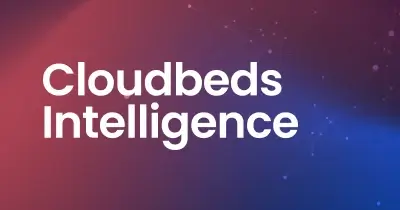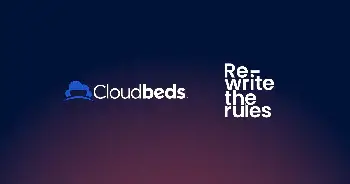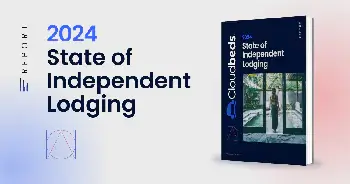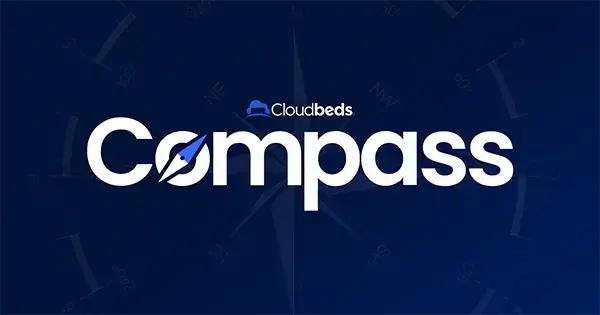
By Linda Pashaj
On average, how much does it cost to generate a booking at your property?
It seems like a simple metric most hotel managers would know off the top of their head, but it’s a bit more complicated. Different guests come with different acquisition costs, and costs are spread across departments, making it challenging to calculate true costs.
However, controlling costs is vital to maximizing profits, so it’s an important metric for lodging owners and operators to track.
Here we break things down for you, explaining how to calculate guest acquisition cost and the different costs to factor in.
What is guest acquisition cost (GAC)?
Also known as customer acquisition cost (CAC), guest acquisition cost is the average amount of money a hotel spends to entice travelers to make bookings.
These costs are primarily comprised of marketing and distribution expenses such as advertising, fees, and commissions, but technology, labor, and other expenses may also be included.
When people plan a trip online, accommodation operators have opportunities to connect with them at various touch points on the traveler’s purchase journey.
For example, let’s say Mrs. Smith is planning a trip to Seattle next weekend to attend a concert. She begins by searching “hotels in Seattle” on Google and explores the listed options on the map, where she finds your property listed. A few days later, she searches for your hotel on Google and finds your search ad at the top of the listings. She clicks on that link and explores your website. A few days later, she visits Trivago to compare prices. She clicks on the link to your hotel booking engine from the site, but ultimately she goes to Booking.com because it’s showing the lowest price, and she books there.
Each of these touchpoints can come with costs to your hotel. This may include cost-per-click (CPC) advertising fees paid to Google and Trivago, commission paid to Booking.com, and the costs of building and maintaining your website and booking engine. In this example, the path to purchase was fairly simple, but some travelers visit dozens of travel sites when planning a trip. The costs of reaching them can quickly add up.
How to calculate your GAC
To calculate your hotel’s average guest acquisition cost, simply divide the total amount spent on guest acquisition activities by the total room revenue earned and then multiply the result by 100 to get a percentage. GAC can be calculated for a month, year, or another period.
Formula: GAC = $ Spent on Guest Acquisition Activities/Rooms Revenue Earned x 100
For example, if you spent $8,500 on guest acquisition activities in November and earned $32,900 in room revenue, your GAC for the month was 25.8%. So basically, just over a quarter of your room revenue went to acquisition costs.
What is a good GAC to target? That’s difficult to say because it can vary by property, property type, time of year, and the costs factored in. For example, GAC is typically higher in low seasons when room rates and occupancy are lower, and lodging properties spend more on marketing campaigns.
Generally, the higher your GAC, the less profitable your bookings. Bear in mind that you must also pay additional operating costs like labor, utilities, and cleaning supplies. If you regularly spend more than you earn, it’s not sustainable. To generate a profit, costs must come down or revenue must go up – or a combination of both.
Why is guest acquisition cost important?
Guest acquisition cost is one of the most important metrics in the hospitality industry because it provides an indication of how much you’re spending to generate bookings. It’s also directly tied to profitability, which in turn impacts asset value.
At a time when inflation is driving up hotel operating costs and travelers are more focused on value, you could risk taking a significant hit on profits. For example, in November 2022, hotel room rates in the US achieved double-digit growth, but when inflation was factored in, ADR was actually 0.7% below pre-pandemic 2019, according to CoStar.
Under any market conditions, if you’re not closely tracking costs, your profits may be eroding without you even realizing it. Taking control of GAC is a good place to start.
Measuring GAC by distribution channel
In addition to overall GAC, it can be insightful to break down GAC by booking channel. For example, if you found that your GAC for OTA bookings is 41%, whereas your GAC for direct bookings is 7%, where would you want to prioritize bookings? GAC comparisons by channel can help guide your marketing and acquisition strategy.
Guest acquisition costs can also be calculated by:
- Market segment (group, transient, etc.)
- Type of guest (business, leisure, family, etc.)
- Source market (local, domestic, international, feeder city, etc.)
As an example, if you find that families have a lower GAC because they book suites and stay longer, you’ll want to find ways to attract more of them. When costs are the same, but guests pay a higher average room rate, GAC is lower.
Measuring profitability by distribution channel
By breaking down your GAC by distribution channel, you can also start to measure and analyze your profitability by distribution channel. Not all distribution channels are made equal, the channels that generate the most profitability (revenue minus costs) should make up the majority of your channel mix. Take a deeper look at your channels to determine which guests spend the most on arrival (guests who book direct or on OTAs, for example) and which channels offer the most flexibility to provide upsell opportunities.
Profitability can be calculated by looking at important KPIs like:
- ProfPAR (profit per available room)
- TRevPAR (total revenue per available room)
- GOPPAR (gross operating profit per available room)
As the world of distribution becomes more complex, hoteliers must look past revenue generation and into profitability and the effects that commissions, discounts, and upsells have on the bottom line.
Attributing guest acquisition costs
One of the challenges in calculating acquisition costs is attribution – determining where to allocate costs. Acquisition costs may be distributed across departments – not only to sales and marketing but also to revenue management, the IT department, rooms, and food & beverage, among others. Costs can be direct or indirect, fixed or variable.
Going back to the example of Mrs. Smith, how would you attribute the costs of acquiring her booking? Calculating CPC fees and OTA commissions is relatively easy, but how would you allocate the costs of maintaining your hotel website and booking engine? And would you factor in wages for marketing staff?
As you can see, things can get complicated. As a result, some properties take a very basic approach to calculations, accounting only for marketing and distribution costs. Others are more thorough, factoring in all related costs.
Benchmarking guest acquisition cost
Once you’ve calculated your GAC, you’ll want to set objectives for maintaining or improving it over time.
Here’s an example of three basic GAC objectives for a six-month period:
- Bring overall GAC down from 25.8% to under 20%
- Bring OTA GAC down from 41% to under 25%
- Keep direct booking costs below 10%
It’s a good idea to track monthly GAC in each area on a spreadsheet, adjusting strategies over time to ensure you achieve your objectives.
Types of guest acquisition costs
Now let’s look at the different types of costs to consider in your GAC calculations.
1. Distribution costs
Distribution costs are the commissions and fees paid to booking channels. This includes:
OTA commissions
Commissions paid to Booking.com, Expedia, and other online travel agencies can drive up acquisition costs. In addition to paying a base commission rate of 15% to 25%, hotels may also participate in promotions and programs that involve extra commissions, fees, or discounts.
Discounts can be “hidden costs” because the rate is reduced rather than a commission or fee being paid to the OTA, so they may not be tracked as an expense.
It’s also important to distinguish between two OTA payment models:
- Agency model. The guest pays the hotel directly, and the hotel forwards the agreed-upon commission to the OTA.
- Merchant model. The OTA collects the payment from the guest and forwards it to the hotel, less commissions and fees.
In the merchant model, acquisition costs are retained by the OTA, not paid out by the hotel, so they too can be overlooked as an expense
Metasearch costs
Metasearch platforms like Google Hotels, Trivago, and Tripadvisor allow travelers to compare prices on multiple booking channels from one page.
When advertising on these platforms, you will encounter two types of guest acquisition costs:
- Cost-per-click (CPC) – the hotel bids for ad placements to compete with other advertisers for a higher ranking in hotel search results and pays a fee for every click that leads to its website or booking engine.
- Commission-per-stay (CPS) – the hotel pays a commission fee on any direct booking that came from the metasearch site (after the guest completes the stay).
CPS costs can rival that of OTAs, but the big difference is that hotels own the guest information and data, allowing them to build better relationships with guests, offer a more personalized experience, and develop guest loyalty.
These fees should be factored into distribution costs. One exception is Google’s free booking links.
Direct booking costs
These are the costs of attracting travelers to book directly rather than through an OTA or third party. Costs may include booking engine fees, payment transaction fees, search engine optimization (SEO), integrations, and website development, hosting, and maintenance.
Direct bookings are considered to be the least costly booking channel, but costs can climb quickly. To ensure ROI from your marketing efforts, consider using a hospitality-focused digital marketing solution.
Other channel costs
Other distribution costs may include fees and commissions paid to GDS providers, wholesalers, travel agents, tour operators, and bed banks. For properties affiliated with a hotel brand, there are also brand and franchise fees.
2. Marketing costs
Hoteliers often stop short at distribution costs when calculating GAC, but this is just a fraction of total costs. Another major source of costs is marketing spending, which may include advertising, email marketing, promotions, social media, sponsorship, events, and public relations.
3. Technology costs
Technology and automation can be another acquisition cost. Hotels should factor in the costs of purchasing, subscribing to, and maintaining the software used to acquire new business.
4. Loyalty program costs
Finally, be sure to include the costs of guest loyalty activities if applicable. This may include loyalty rewards and perks, email marketing, loyalty software, and administration costs. These activities are particularly important for reducing acquisition costs because customer retention is generally much cheaper than acquiring new ones.
Reducing guest acquisition cost: your path to greater profitability
As you can see, the list of acquisition costs in the hotel business can be extensive. It’s best to start with the basics and get more detailed over time. Once you have taken control of your guest acquisition cost, you’ll be well-positioned to optimize profitability for your property.

















